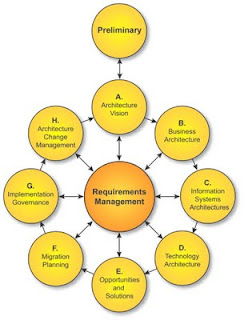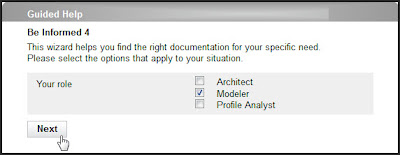Personal Branding: lessons learned from product marketing (PART 3)
 In the previous entries in this series on personal branding, we have looked at the similarities between product branding and personal branding, learned the benefits of a goal-driven approach and defined the optimal balance between using facts and future developments in our personal brand.
In the previous entries in this series on personal branding, we have looked at the similarities between product branding and personal branding, learned the benefits of a goal-driven approach and defined the optimal balance between using facts and future developments in our personal brand.Lesson 3: Be clear about your motives
As a product marketer I have worked for a company that used strong statements to set itself and its product apart from other software companies and its solutions. These included statements that could be seen as ambitious or even arrogant. The goal was obviously to show the world how innovative and ground-breaking our product was, but why would we take the risk to go as far as calling ourselves – our product – a revolution in IT? Think of lesson 2: the further you get away from the facts, the harder it is to live up to the expectations.
On top of all this, people were wondering what the company’s motives were for this distinct type of branding. So they didn’t understand the motive, guessing that it was no more than a sales trick to make the competition look outdated. The truth was however that we all – not only the C-level – believed that what we were doing was revolutionary. Our product brand was based on pride and confidence.
It was the combination of being able to live up to the expectations and making the real motives for the product branding clear that in the end prevented negative publicity and loss of brand value.
Motives in personal branding
As with product branding, in personal branding most of us focus on building up a strong brand based on our capabilities and knowledge. But what about our motives? Wouldn’t it be good if people knew why we do things in the way we are doing them?If you read through the previous entries in this blog series, you can see that I am very clear about my goal: I want to be seen as a thought leader in contextual intelligence.
Why?
Because everything I do comes from the believe that technology should be used to offer organizations the opportunity to instantly make the most out of business opportunities and take well-informed decisions.
How?
This level of contextual intelligence requires more than just a technological solution: it requires a change in the way we look at processes and technology.
What?
My purpose is to guide organizations and its individual key players through these changes and make the most out of current technology innovations.
The thing is, if you are clear about your motives and make it part of your branding, it will make your brand stronger. Also people will be more forgiving if there are some minor gaps between facts and branding, as they understand what you are aiming at.
Please feel free to share your own experiences and ideas in the comments. This might be a good place to start explaining your motives as part of your personal branding.
Next time we will look into timing and speed in Lesson 4: Don’t wait for tomorrow.


Comments